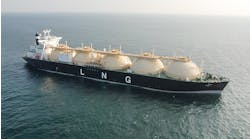Offshore staff
HOUSTON – BMT Scientific Marine Services (BMT) will collaborate with ZephIR Lidar and Miros to expand its instrumentation service for offshore operations.
ZephIR provides wind Lidar products while Miros is a specialist in wave monitoring and remote sensing.
The Lidar instruments can capture wind measurements from 10-200 m (33-656 ft) above the height of an offshore facility. Traditional measurement techniques such as anemometers take a single point measurement, whereas ZephIR allows a clearer view of the wind shear profile and other characteristics such as turbulence, BMT says.
Understanding the wind shear profile is particularly important for safe and efficient helicopter operations, the company points out.
Oil and gas majors operating in theGulf of Mexico are already said to be adopting these solutions to support their structural engineering decisions.
Lidar has the added safety advantage of being based on the deck of the platform, negating the need for working at height to install anemometers which are traditionally placed on top of the derrick or crane.
In addition, Lidars are mobile and do not require annual servicing or maintenance.
Jan Engebretsen, an executive at Miros, said: “We have a suite of wave sensors and systems that have different characteristics for various user applications.
“Remote sensing has a number of advantages – it not only removes the hassle of having equipment in the water, users can also measure the sea at a distance. Remote sensing is also the best method of wave measurements from vessels in transit.
“As part of our cooperation with BMT, we will focus primarily on our SM-050 Wave and Current Radar…a remote sensor for measurement of directional wave spectra and surface current. The radar uses advanced microwave remote sensing techniques and observes the ocean surface in a semi-circle at a distance up to 500 m [1,640 ft] from the sensor.
“This sensor has characteristics similar to that of a Wave Buoy. With its advantage of being ‘dry-mounted,’ it has successfully replaced the more cumbersome buoy for various customers due to ease of installation, minimal maintenance requirements, and far lower lifetime costs.”
05/05/2017


